The Palazzo Doria Pamphilj is one of the largest and most magnificent palaces in the center of Rome. The seventeenth century palace is home to the Galleria Doria Pamphilj, a gallery with an exquisite collection of paintings and sculpture.
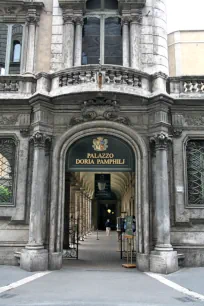
The Palazzo (palace) and Galleria (art gallery) are named after the Pamphilj family (also written Pamphili), who through marriage into the Doria family are now known as Doria-Pamphilj.
The Palazzo
The palace is situated along Via del Corso, near Piazza Venezia. The oldest parts of the palace go back to the fifteenth century. Over time, it was expanded by members of Rome’s most illustrious families, including the della Rovere, Aldobrandini and Pamphilj families.
In 1601 the palace came into the hands of Cardinal Pietro Aldobrandini, who decorated it with a number of paintings that would form the start of the art collection that is now on display in the palace. Around the same time, the palace was expanded with several wings.
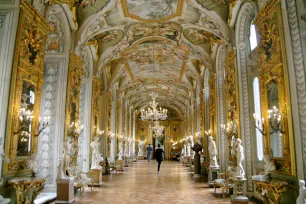
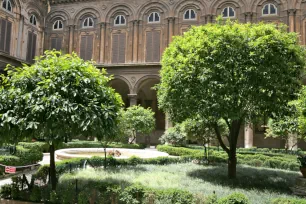
Through marriage the palace became owned by the Pamphilj family who to this day use it as a residence. Much of its current countenance dates back to 1734 when Prince Don Camillo Pamphilj had the main facade along Via del Corso rebuilt by architect Gabriele Valvassori in the then popular Rococo style. He also added private rooms in the same exuberant style. The palace was expanded even further and is now the largest private residence in the center of Rome, a huge complex with five courtyards bordering four streets and two squares.
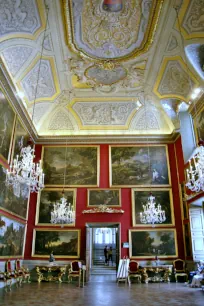

The Private Apartments
The Doria-Pamphilj family opened a section of the palace to the public, including some of the most opulent private apartments. You enter the apartments through a beautiful inner courtyard. Inside, the rooms are embellished with paintings, chandeliers, sculpture and magnificent ceiling decorations.
The first room you encounter is the bathroom, adorned with statues and wall paintings. The following room is the Jupiter Room, notable for its eighteenth century armchairs. The walls of the next room, the Poussin Room, are completely covered with large landscape paintings.
The Throne Room is named for the throne which, following an old Roman tradition, faces the wall when there is no papal visit. Other rooms you’ll pass include the Blue Room, the opulent Velvet Room – with a bust of pope Innocent X (a member of the Pamphilj family), the Green Room, the large Ballroom and the Yellow Room.
The chapel is also worth a good look. It was designed in the late seventeenth century by Carlo Fontana; the ceiling painting was added later, in the nineteenth century, by Tommaso Minardi. The chapel contains some interesting relics: the completely preserved body of St. Theodora and – supposedly – relics of one of the soldiers who guarded Jesus during his crucifixion.
The Galleries

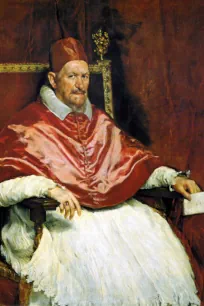
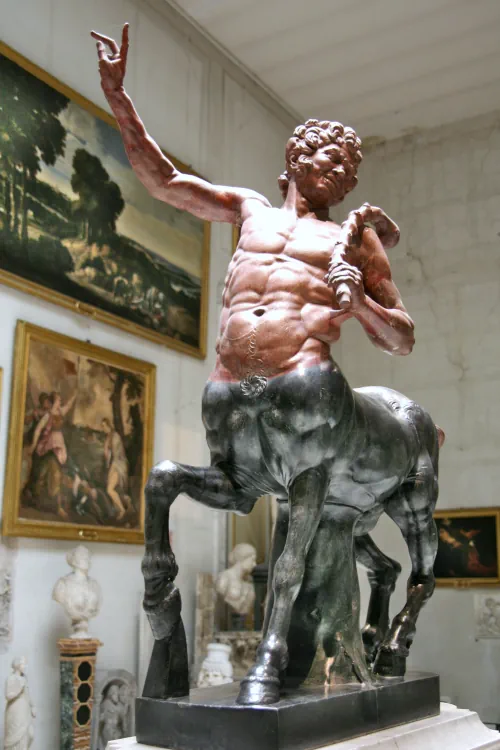
The highlight of the Palazzo Doria Pamphilj is the art gallery, which contains one of the best art collections in Rome, with about four hundred works from the fifteenth to the eighteenth centuries.
The first gallery is the Aldobrandini Gallery, where you can admire the museum’s most famous painting, a portrait of Pope Innocent X by Velázquez (1650). You can compare the painting with two busts of the same pope, created by Bernini. The first bust was slightly damaged, so Bernini created a new one in just one week. Allegedly, Innocent X wasn’t too happy with the sculpture, since he deemed it too realistic. Other highlights in the gallery include the ‘Fighting Putti‘, a painting by Guido Reni which symbolizes the fight between the nobles and the lower classes, and the ‘Moneylenders‘ (or ‘Usurers’), from Quinten Matsys.
Next is the Gallery of Mirrors, undoubtedly the most opulent room in the palace. It was designed around 1730 by Gabriele Valvassori. It is embellished with frescoes depicting the Labours of Hercules, a creation of the Bolognese painter Aureliano Miani.
The third gallery is the Pamphilj gallery. Some notable works of art here include a work by Pieter Bruegel the Elder, ‘Battle off the Port of Naples‘, one of the few Italian paintings created by the Flemish master. Another famous painting shows Mary adoring her child, by Guido Reni.
The following gallery is the Doria Gallery where you find several works of Jan Bruegel as well as two paintings on wood panels by Parmigianino. There is also a bust of Olympia Maidalchini Pamphilj (sister-in-law of Innocent X), created by Alessandro Algardi.
Next is the Aldobrandini Hall, which is home to a couple of masterpieces from Caravaggio: ‘Magdalene‘ and ‘Rest on the Flight into Egypt‘. There are also plenty of sculptures in the hall, most notably a large sculpted sarcophagus and a colored marble statue of a centaur, from around the second century AD.
The last room is the Primitives Room, where you find paintings on wood panels, in particular from Italian and Flemish artists.

